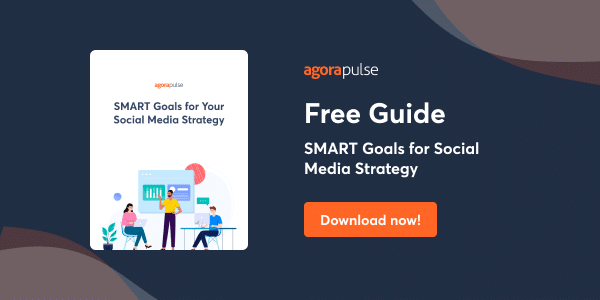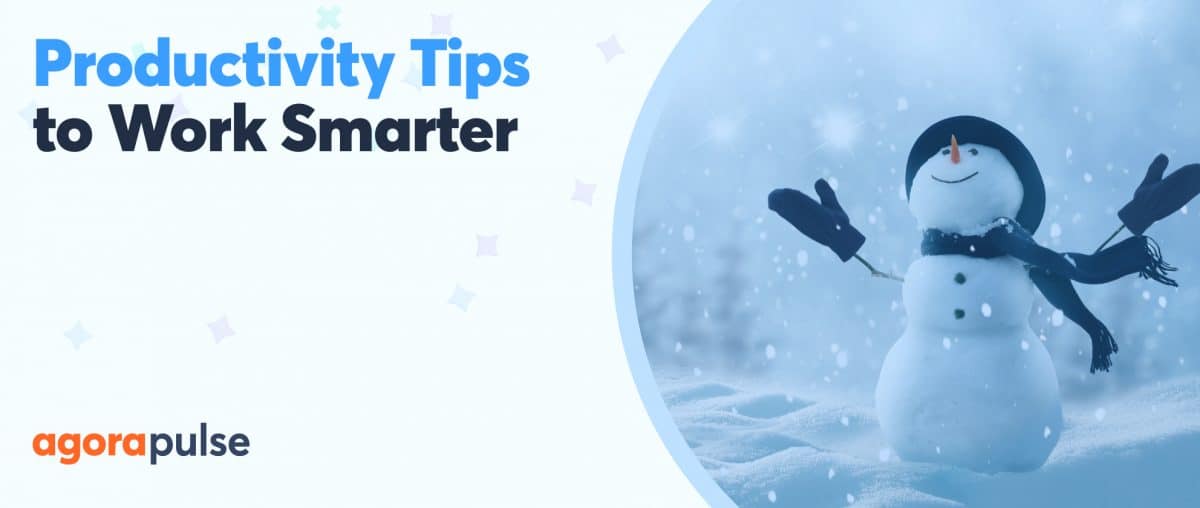What’s the big idea weaving through your digital agency or career as a social media manager? Have you found “the red thread” that tells your story? Storyteller and message strategist Tamsen Webster can help with these tips from her guest visit to Social Pulse Weekly.
If you’re struggling to find that one big idea that will help define, build, and grow your business or brand, you’ll want to read this post.
On our most recent episode of Social Pulse Weekly, I sat down with Tamsen Webster (also known as The Idea Whisperer). She’s combined 20 years in brand and message strategy with four years as a TEDx executive producer to create The Red Thread, a simple way to change how people see, and what they do as a result.
In this post, Tamsen shares actionable tips and strategies to define and grow our big ideas into even bigger ones!
Q. I’ve heard you say you actually learned the most about inspiring change as a Weight Watchers leader. Could you tell us more about that?
Tamsen Webster: “This year is actually my 20th anniversary of having maintained a 50-pound weight loss through Weight Watchers. I wanted to give back, so I spent 13 years a Weight Watchers leader in addition to my full-time job.
“What I found is that I was helping people do something their conscious brain really wanted to do, which was to change their behavior and lose weight.
“It was really about learning how to articulate things in a way that the light goes on for people. As I figured this out, I began taking those lessons and mapping them back to what I was doing in my real job, which was branding and marketing for a bunch of different companies. What I realized is that in marketing there’s a theory of what’s supposed to work, and then there’s what actually works. And what Weight Watcher’s taught me was not only what actually works in the moment, but what works over time.
“This really informed my own approach to marketing and brand strategy. I realized that if something wasn’t going to work at the individual level, it would never work at the market level. That meant we needed to do a much better job of understanding how the individual decision to change actually happens.
“And the key to that—and I have found this again and again—is to make the change in a way that doesn’t invoke pain. You can take the change up to the point of discomfort, but at the point it starts to create mental pain for you, you will not maintain it.
“The example I often give is this: If you’re a person who loves to drink 3 trenta Frappuccinos every day, going from that to zero is a painful change. But if you go from 3 to 2 trentas, or from 3 trentas to 3 ventis, that’s probably not awesome, but it’s also not painful. And when you get to the point where that’s normal, and then you can make another adjustment.
“Whether we’re talking about food, or we’re talking about a change in thinking or behavior, companies are trying to do this with their products or services. And the same thing works. People won’t keep doing something that’s too extreme or too painful compared to what they’re doing or thinking now.”
Q. What advice do you have to anyone trying to inspire change in others?
Tamsen Webster: “I’m not sure if this is an official term, but I use the phrase ‘mindset-based marketing.’ It’s much less about targets and segments, and much more about who I’m talking to, where they are right now, and how they see the world. What’s important is to understand that how someone sees the world drives what they do in it. And you can’t change someone until you change how they see.
“As marketers or even just humans trying to communicate with each other, we owe it to ourselves and to the people we’re talking with to really understand how they see the world. The more we can understand that, the more we can understand what might want to make them do something different, and where the opportunities are for them to actually shift their mindset. And because they’ve changed how they see, they’ll change what they do.”
Q. What advice would you give to people who get overwhelmed by the idea of change?
Tamsen Webster: “The test I always give to my Weight Watcher’s members is a useful test for anyone. Whatever change you’re wanting to make, ask yourself: Are you willing to make that change for the rest of your life? If the answer is no, don’t do it.
“We want to get to the point where we’re thinking differently about things, and not criticizing ourselves for the fact that we want what we want. Instead, we want to understand that it all comes down to making those shifts in a way that’s consistent with who we see ourselves to be right now.
“Sometimes this means anchoring on a different part of ourselves than we thought. It can be really tempting for people to believe that the best way to get someone to change is to actually try to change what they want and what they believe. But what I’ve seen consistently in my work at TEDx and working with brands is that it comes down to this: How can we validate what someone already wants and believes? How we do make the case for change? What’s the story that they’ll tell themselves about why an action, decision, or product or service is the right one?“
Q. For people who aren’t familiar with your idea of the “red thread,” can you explain what it is, and how people and businesses can use it to grow their ideas into even bigger ones?
Tamsen Webster: “The red thread is a phrase that Northern Europeans often use. The root of it is the mythological story of Theseus of Athens and the Minotaur’s Labyrinth. The red thread is the tool Theseus used to trace his path through the maze, so he could get back out again. This tracing and re-tracing of steps is essentially what I’m doing when I’m working with brands.
“What I believe and what I’ve seen to be true is that this red thread is kind of sitting beneath our brand, like the operating system of a computer; and it’s the set of factors that we use to see the world. It’s what gives rise to everything else. It’s really a way to describe your worldview.
“Practically speaking, the red thread is what connects a question to an answer, and what makes it make sense.
“The example I often give is to imagine we’re playing a game of Jeopardy, and I say the answer is 42. There are a couple of different questions that could be right in Jeopardy-land: for instance, it could be, ‘Who is Bill Clinton?’ if we’re talking about presidents or ‘Who is Jackie Robinson?’ if we’re talking about retired baseball jersey numbers. And each of these question/answer combinations is right … until you put the category in there. It’s only when you add the category that you actually know that the combination is right.
“I use this example because this is actually how our brains work. I see this happen all the time, particularly in messaging. We’re usually really good at identifying a solution because that’s usually our product or service. And we’re usually fairly good at identifying the problem, which is kind of like the question. But what we tend to leave out almost all the time is the thing that connects those two: the category, or the thing that really makes those things make sense.
“To me, this is what the red thread is. It’s a way to understand the ‘operating system’ of the person or company. It’s your worldview that connects your answer to the question. It’s what drives everything you do.”
Social Pulse Weekly with Special Guest Tamsen Webster
Want to make your big ideas even bigger? This Friday on Social Pulse Weekly, we are joined by the “Idea Whisperer” and former TEDx Executive Producer, Tamsen Webster. She helps people find, build, and tell the stories of their ideas using their Red Thread®, the universal (but unique!) tie between how we see the world and what we do in it. Join us as she gives us some of her best tips for storytelling, branding, change management, idea development and more!
Posted by Agorapulse on Wednesday, October 23, 2019
Q. How do you help companies build and grow their big ideas, even if they don’t have an idea themselves?
Tamsen Webster: “Usually brands ask me how they can tell a better story or figure out what their story is. What I do when I’m working with these companies is to retrace their steps. I mentioned before that there’s a connection between questions and answers; and this connection is actually theorized and known.
“Chris Argyris, who was a professor at Harvard Business school, created a theory of how we make decisions. He called this the Ladder of Inference. Basically, we select facts and interpret them and decide which ones make sense. We make conclusions about them, and those lead to beliefs, which lead to action. A simplified way of thinking of this is: understand, agree, act.
“When I work with a company, we start with a question their customers have right now: the question their product or service is the answer to. For example, I worked with an independent school last weekend, and the question their audience is asking is, ‘How do I find the right school for my child?’ Obviously, the answer is their school. But what we want to know is, why is that question so hard to answer right now? So, I start with that audience question, which is what I call the goal.
“The next thing we try to figure out is what I call the problem of perspective. What is it that people aren’t seeing that’s getting in the way right now? It’s important to focus not on what they’re not doing, but on how they’re looking at a situation, and how that’s getting in their way.
“The third piece we’re trying to figure out is the core truth. What is a truth that your audience will agree makes that problem impossible to ignore?
“Finally, we need to figure out the change and the action: What change does that lead to? And then what actions create that change?
“By the time we’ve gotten through all these steps, we’ve actually found the steps that can move people through the ladder of inference: understand, agree, act. And because those steps are actually the structure of a story, we’ve also found a really powerful way to talk about that idea.”
Q. What’s the biggest mistake you see companies or brands making when it comes to their big ideas?
Tamsen Webster: “The biggest thing is understanding that there’s always something between the problem and the solution and that they need to understand what that is. It’s really helpful to understand the structure of stories. The red thread is based on story structure, but it includes a piece I haven’t seen anyone else include–and that’s the truth piece.
“Every story starts with something people want. That’s the goal.
“Every story has a problem the hero didn’t know they had in the beginning. That’s the problem.
“The emotional climax of the story is often called the ‘moment of truth,’ and that’s the point at which the hero (hint: your clients, customers or audience) hears or remembers something that makes the world they knew impossible to go back to, or their problem impossible to ignore. In other words, it forces change. It forces a choice. And that’s the piece I see many brands skip over.”
Q. How can business owners and marketers figure out their own red thread?
Tamsen Webster: “An easy way to think about your red thread is what I call the conversational case. This is a new tool I’ve been playing with. Using the conversational case allows you to not only talk about your idea more powerfully, it actually gives your idea more power.
“Here’s how it works.
“Think about the people you typically work with (in my case, it would be ‘message makers’), and figure out a common question they ask, and the high-level goal they’re working towards. For instance, ‘When I work with ____________, they often want to know _______________, so they can _____________. ‘
“For instance, I might say, ‘When I work with message makers, they often want to know how to talk about their idea more powerfully so they can get more actions, engagement and conversions in their business.’
“The next piece to fill in is, ‘When looking for that answer, they often focus on _________, rather than on ___________.’ In other words, where are people are putting their energies right now, instead of where they should be putting their energies? If we’re talking about ideas, I often find people focus on the significance of their ideas more than the structure of it; on what makes their ideas sexy (like its features and benefits) rather than what makes them strong.
“The final piece to fill in is the truth piece, and this is one that people tend to skip over. ‘We can agree it’s true that _____________, which is why my answer is to ___________.’ Fill in this piece with something your audience is likely to understand or agree with, just on the surface of it.
“For instance, I could say, ‘We can agree that ideas are built, not found.’ And then you end with your answer or approach: ‘And this is why my answer is to _________.’
To summarize, the conversational case looks like this:
- When I work with ________________
- They often want to know ________________
- So they can _______________
- When looking for that answer, they often focus on ________________
- Rather than on _________________
- Yet we can agree it’s true that __________________
- Which is why my answer is to ________________.
Q. What advice do you have for marketers and social media managers as they work on their big ideas going forward?
Tamsen Webster: “Stop trying to create a one-size-fits-all message. The story, the core, the red thread of your company stays pretty true. But in the words of Agatha Christie, ‘Words are the outer clothing of ideas.’ You can’t ever really see your red thread: the idea that’s underneath it all. But you give shape to it by putting a message around it.
“The message is what happens at the intersection between :
- The idea or your red thread
- The outcome, which is what you’re trying to have happen both for yourself and your audience
- Your audience. How are you going to give words to that idea for that audience so they can accomplish that outcome?
“In other words, ask yourself: What do we want this to do? Who is it for? And what question is our audience asking right now? If you can answer these questions, you’re going to really start to give shape to that idea.”
Tune Into Social Pulse Weekly
Social Pulse Weekly brings you incredible marketing experts and today’s latest social media news and developments. Tune in every Friday at 2PM ET to keep your finger on the pulse of social media.
Sign up now for a FREE demo.









